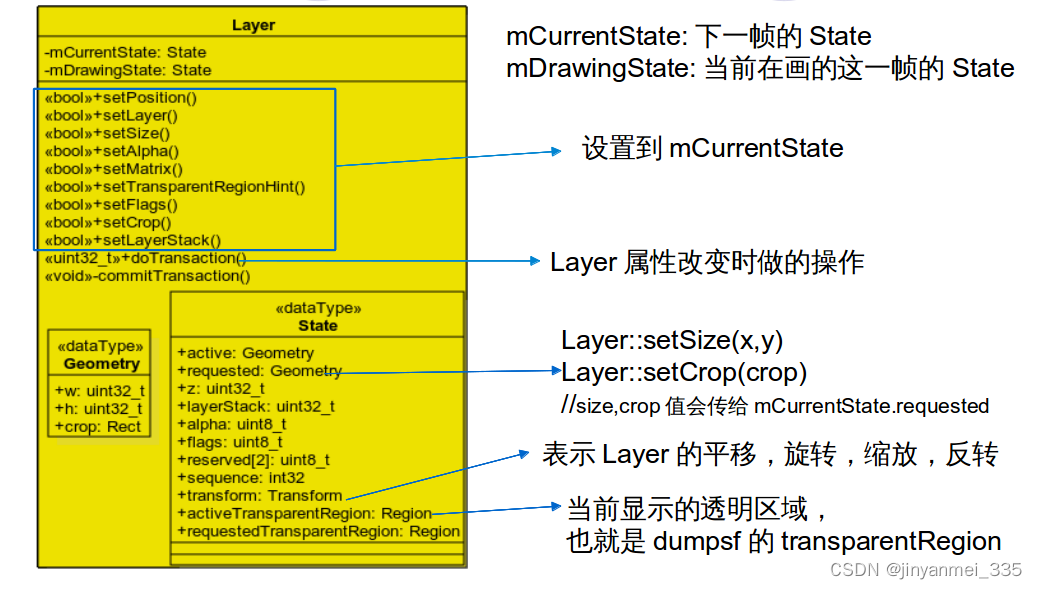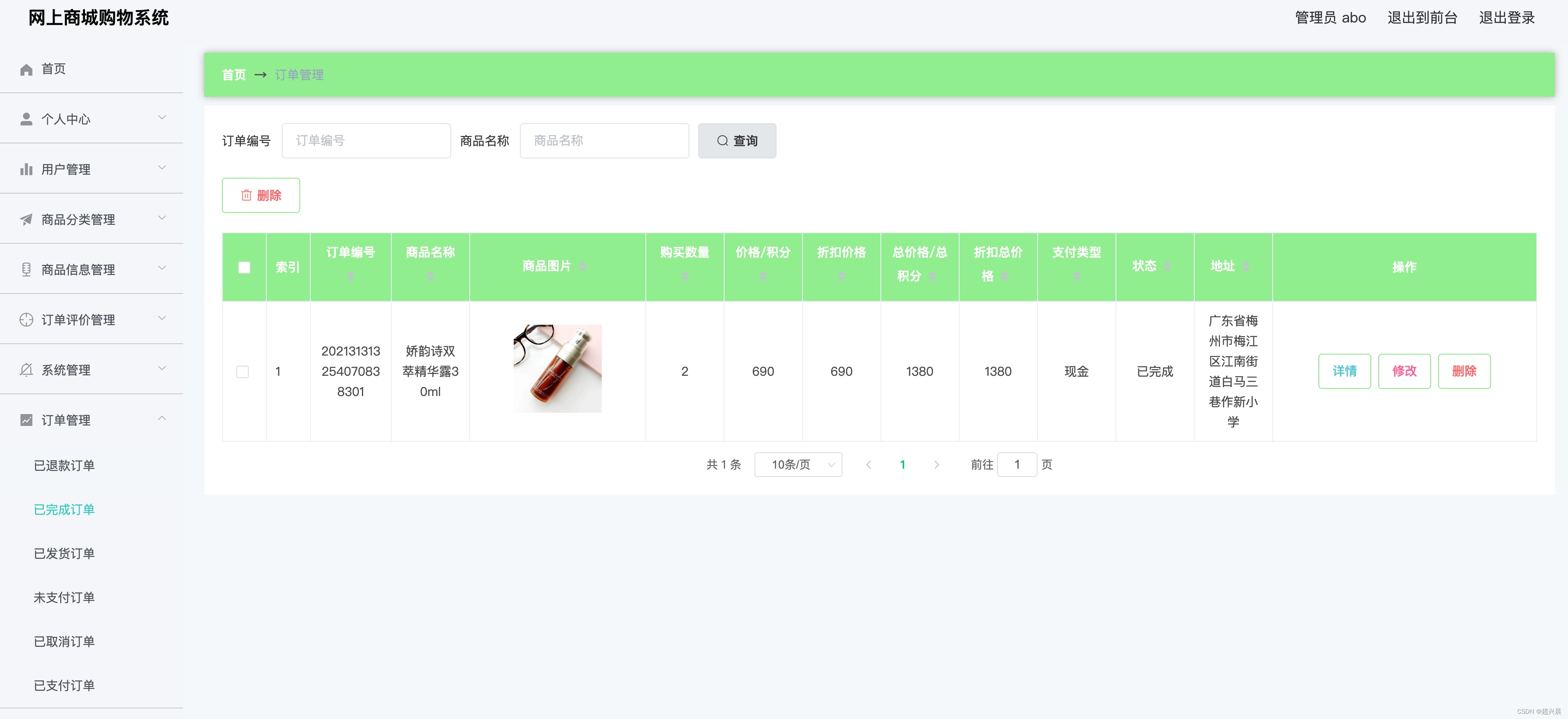1. 注解驱动入门案例介绍
1.1 需求描述
1.需求:
实现保存一条数据到数据库。
2.表结构:
create table account(
id int primary key auto_increment,
name varchar(50),
money double(7,2)
);
3.要求:
使用spring框架中的JdbcTemplate和DriverManagerDataSource
使用纯注解配置spring的ioc
1.2 案例实现
- 导入坐标
<dependencies>
<dependency>
<groupId>org.springframework</groupId>
<artifactId>spring-context</artifactId>
<version>5.1.6.RELEASE</version>
</dependency>
<dependency>
<groupId>org.springframework</groupId>
<artifactId>spring-jdbc</artifactId>
<version>5.1.6.RELEASE</version>
</dependency>
<dependency>
<groupId>mysql</groupId>
<artifactId>mysql-connector-java</artifactId>
<version>5.1.45</version>
</dependency>
</dependencies>
- 编写配置类
/**
* spring的配置类
* 用于替代xml配置
*/
@Configuration
@Import(JdbcConfig.class)
@PropertySource("classpath:jdbc.properties")
public class SpringConfiguration {
}
/**
* 连接数据库的配置
* @author 黑马程序员
* @Company http://www.itheima.com
*/
public class JdbcConfig {
@Value("${jdbc.driver}")
private String driver;
@Value("${jdbc.url}")
private String url;
@Value("${jdbc.username}")
private String username;
@Value("${jdbc.password}")
private String password;
@Bean("jdbcTemplate")
public JdbcTemplate createJdbcTemplate(DataSource dataSource){
return new JdbcTemplate(dataSource);
}
@Bean("dataSource")
public DataSource createDataSource(){
DriverManagerDataSource dataSource = new DriverManagerDataSource();
dataSource.setDriverClassName(driver);
dataSource.setUrl(url);
dataSource.setUsername(username);
dataSource.setPassword(password);
return dataSource;
}
}
- 编写配置文件
jdbc.driver=com.mysql.jdbc.Driver
jdbc.url=jdbc:mysql://localhost:3306/spring_day01
jdbc.username=root
jdbc.password=1234
- 编写测试类
public class SpringAnnotationDrivenTest {
/**
* 测试
* @param args
*/
public static void main(String[] args) {
//1.获取容器
ApplicationContext ac = new AnnotationConfigApplicationContext(SpringConfiguration.class);
//2.根据id获取对象
JdbcTemplate jdbcTemplate = ac.getBean("jdbcTemplate",JdbcTemplate.class);
//3.执行操作
jdbcTemplate.update("insert into account(name,money)values(?,?)","test",12345);
}
}
2. IOC的常用注解分析
2.1 @Configuration
2.1.1 源码
@Target(ElementType.TYPE)
@Retention(RetentionPolicy.RUNTIME)
@Documented
@Component
public @interface Configuration {
/**
* Explicitly specify the name of the Spring bean definition associated with the
* {@code @Configuration} class. If left unspecified (the common case), a bean
* name will be automatically generated.
* <p>The custom name applies only if the {@code @Configuration} class is picked
* up via component scanning or supplied directly to an
* {@link AnnotationConfigApplicationContext}. If the {@code @Configuration} class
* is registered as a traditional XML bean definition, the name/id of the bean
* element will take precedence.
* @return the explicit component name, if any (or empty String otherwise)
* @see org.springframework.beans.factory.support.DefaultBeanNameGenerator
*/
@AliasFor(annotation = Component.class)
String value() default "";
}
2.1.2 说明
它是在spring3.0版本之后加入的。此注解是spring支持注解驱动开发的一个标志。表明当前类是spring的一个配置类,作用是替代spring的applicationContext.xml。但其本质就是@Component注解,被此注解修饰的类,也会被存入spring的ioc容器。
使用场景:
在注解驱动开发时,用于编写配置的类,通常可以使用此注解。一般情况下,我们的配置也会分为主从配置,@Configuration一般出现在主配置类上。值得注意的是,如果我们在注解驱动开发时,构建ioc容器使用的是传入字节码的构造函数,此注解可以省略。但是如果传入的是一个包,此注解则不能省略。
属性:
value: 用于存入spring的Ioc容器中Bean的id。
2.1.3 示例
在注解驱动的入门案例中,由于没有了applicationContext.xml,就没法在xml中配置spring创建容器要扫描的包了。那么,我们自己写的一些类,通过注解配置到ioc容器中也无法实现了。此时就可以使用此注解来代替spring的配置文件。
/**
* spring的配置类
* 用于替代xml配置
*/
@Configuration
@Import(JdbcConfig.class)
@PropertySource("classpath:jdbc.properties")
@ComponentScan("com.test")
public class SpringConfiguration {
}
2.2 @ComponentScan
2.2.1、源码
@Retention(RetentionPolicy.RUNTIME)
@Target(ElementType.TYPE)
@Documented
@Repeatable(ComponentScans.class)
public @interface ComponentScan {
/**
*/
@AliasFor("basePackages")
String[] value() default {};
/**
*/
@AliasFor("value")
String[] basePackages() default {};
/**
*/
Class<?>[] basePackageClasses() default {};
/**
*/
Class<? extends BeanNameGenerator> nameGenerator() default BeanNameGenerator.class;
/**
*/
Class<? extends ScopeMetadataResolver> scopeResolver() default AnnotationScopeMetadataResolver.class;
/**
*/
ScopedProxyMode scopedProxy() default ScopedProxyMode.DEFAULT;
/**
*/
String resourcePattern() default ClassPathScanningCandidateComponentProvider.DEFAULT_RESOURCE_PATTERN;
/**
*/
boolean useDefaultFilters() default true;
/**
*/
Filter[] includeFilters() default {};
/**
*/
Filter[] excludeFilters() default {};
/**
*/
boolean lazyInit() default false;
/**
* Declares the type filter to be used as an {@linkplain ComponentScan#includeFilters
* include filter} or {@linkplain ComponentScan#excludeFilters exclude filter}.
*/
@Retention(RetentionPolicy.RUNTIME)
@Target({})
@interface Filter {
/**
*/
FilterType type() default FilterType.ANNOTATION;
/**
*/
@AliasFor("classes")
Class<?>[] value() default {};
/**
*/
@AliasFor("value")
Class<?>[] classes() default {};
/**
*/
String[] pattern() default {};
}
}
2.2.2 说明
-
作用:
用于指定创建容器时要扫描的包。该注解在指定扫描位置时,可以指定包名,也可以指定扫描类。同时支持定义扫描规则,例如包含哪些或者排除哪些。同时,它还支持自定义Bean的命名规则。 -
属性:
value: 用于指定要扫描的包。当指定包名称之后,spring会扫描指定包及其子包下的所有类。
basePackages: 它和value作用是一样的。
basePackageClasses: 指定具体要扫描的类的字节码。
nameGenrator: 指定扫描bean对象存入容器时的命名规则。
scopeResolver: 用于处理并转换检测到的Bean的作用范围。
soperdProxy: 用于指定bean生成时的代理方式。默认是Default,则不使用代理。
resourcePattern: 用于指定符合组件检测条件的类文件,默认是包扫描下的 **/*.class
useDefaultFilters: 是否对带有@Component, @Repository, @Service, @Controller注解的类开启检测,默认是开启的。
includeFilters: 自定义组件扫描的过滤规则,用以扫描组件。
excludeFilters: 自定义组件扫描的排除规则。
lazyInit: 组件扫描时是否采用懒加载 ,默认不开启。 -
使用场景:
在注解驱动开发时,我们自己编写的类都使用注解的方式进行配置,要想让spring添加到ioc容器中,就需要使用此注解来实现组件的扫描。
2.2.3 示例
在入门案例中,如果我们加入了dao或者记录日志的工具类,这些使用了@Component或其衍生注解配置的bean,要想让他们进入ioc容器,就需要使用@ComponentScan。
package com.test.dao.impl;
import com.test.dao.AccountDao;
@Repository("accountDao")
public class AccountDaoImpl implements AccountDao{
//持久层开发
}
/**
* spring的配置类
* 用于替代xml配置
*/
@Configuration
@Import(JdbcConfig.class)
@PropertySource("classpath:jdbc.properties")
@ComponentScan("com.test")
public class SpringConfiguration {
}
2.3 @Bean
2.3.1 源码
package org.springframework.context.annotation;
import java.lang.annotation.Documented;
import java.lang.annotation.ElementType;
import java.lang.annotation.Retention;
import java.lang.annotation.RetentionPolicy;
import java.lang.annotation.Target;
import org.springframework.beans.factory.annotation.Autowire;
import org.springframework.beans.factory.support.AbstractBeanDefinition;
import org.springframework.core.annotation.AliasFor;
@Target({ElementType.METHOD, ElementType.ANNOTATION_TYPE})
@Retention(RetentionPolicy.RUNTIME)
@Documented
public @interface Bean {
/**
*/
@AliasFor("name")
String[] value() default {};
/**
*/
@AliasFor("value")
String[] name() default {};
/**
*/
@Deprecated
Autowire autowire() default Autowire.NO;
/**
*/
boolean autowireCandidate() default true;
/**
*/
String initMethod() default "";
/**
*/
String destroyMethod() default AbstractBeanDefinition.INFER_METHOD;
}
2.3.2 说明
-
作用:
它写在方法上,表示把当前方法的返回值存入spring的ioc容器。同时还可以出现在注解上,作为元注解来使用。
-
属性:
name: 用于指定存入spring容器中bean的标识。支持指定多个标识。当不指定该属性时,默认值是当前方法的名称。
value: 它和name属性的作用是一样的。
autowireCandidate: 用于指定是否支持自动按类型注入到其他bean中。只影响@Autowired注解的使用,不影响@Resource注解注入。默认值为true,意为允许使用自动按类型注入。
initMethod: 用于指定初始化方法。
destroyMethod: 用于指定销毁方法。 -
使用场景:
通常情况下,在基于注解的配置中,我们用于把一个类存入spring的ioc容器中,首先考虑的是使用@Component以及他的衍生注解。但是如果遇到要
存入容器的Bean对象不是我们写的类,此时无法在类上添加@Component注解,这时就需要此注解了。
2.3.3 示例:
例如,在我们配置JdbcTemplate使用Spring内置数据源DriverManagerDataSource时,数据源类是spring-jdbc这个jar包中类,此时我们无法编辑,此时就可以使用@Bean注解配置。
@Bean("jdbcTemplate")
public JdbcTemplate createJdbcTemplate(DataSource dataSource){
return new JdbcTemplate(dataSource);
}
2.4 @Import
2.4.1 源码
@Target(ElementType.TYPE)
@Retention(RetentionPolicy.RUNTIME)
@Documented
public @interface Import {
/**
*/
Class<?>[] value();
}
2.4.2 说明
-
作用:
该注解是使用在类上的,通常和注解驱动的配置类一起使用,其作用是引入其他配置类。使用此注解之后,可以使我们的注解驱动开发和早期xml配置一样,分别配置不同的内容,使配置更加清晰。同时指定此注解之后,被引入的类上可以不再使用@Configuration,@Component等注解。
-
属性:
value:用于指定其他配置类的字节码。它支持指定多个配置类。 -
使用场景:
当我们在使用注解驱动开发时,由于配置项过多,如果都写在一个类里面,配置结构和内容将杂乱不堪,此时使用此注解可以把配置项分门别类进行配置。
2.4.3 示例
在入门案例中,我们使用了SpringConfiguration做为主配置类,而连接数据库相关的配置被分配到了JdbcConfig配置类中,此时在SpringConfiguration类上使用@Import注解就可以把JdbcConfig导入进来了。
/**
* spring的配置类
* 用于替代xml配置
*/
@Configuration
@Import(JdbcConfig.class)
@PropertySource("classpath:jdbc.properties")
@ComponentScan("com.test")
public class SpringConfiguration {
}
/**
* 连接数据库的配置
*/
public class JdbcConfig {
@Value("${jdbc.driver}")
private String driver;
@Value("${jdbc.url}")
private String url;
@Value("${jdbc.username}")
private String username;
@Value("${jdbc.password}")
private String password;
@Bean("jdbcTemplate")
public JdbcTemplate createJdbcTemplate(DataSource dataSource){
return new JdbcTemplate(dataSource);
}
@Bean("dataSource")
public DataSource createDataSource(){
DriverManagerDataSource dataSource = new DriverManagerDataSource();
dataSource.setDriverClassName(driver);
dataSource.setUrl(url);
dataSource.setUsername(username);
dataSource.setPassword(password);
return dataSource;
}
}
2.5 @PropertySource
2.5.1 源码
@Retention(RetentionPolicy.RUNTIME)
@Documented
@Repeatable(PropertySources.class)
public @interface PropertySource {
/**
*/
String name() default "";
/**
*/
String[] value();
/**
*/
boolean ignoreResourceNotFound() default false;
/**
*/
String encoding() default "";
/**
*/
Class<? extends PropertySourceFactory> factory() default PropertySourceFactory.class;
}
2.5.2 说明
-
作用:
用于指定读取资源文件的位置。注意,它不仅支持properties,也支持xml文件,并且通过YAML解析器,配合自定义PropertySourceFactory实现解析yml配置文件。 -
属性:
name: 指定资源的名称。如果没有指定,将根据基础资源描述生成。
value: 指定资源的位置。可以是类路径,也可以是文件路径。
ignoreResourceNotFound: 指定是否忽略资源文件是否存在,默认false,即当资源文件不存在时spring启动将会报错。
encoding: 指定解析资源文件使用的字符集。当有中文的时候,需要指定中文的字符集。
factory: 指定读取对应资源文件的工厂类,默认的是PropertySourceFactory。 -
使用场景:
开发中使用注解驱动后,xml配置文件就没有了,此时一些配置如果直接写在类中,会造成和java源码的紧密耦合,修改起来不方便。此时可以使用properties或者yml来配置。
2.5.3 示例
在入门案例中,我们连接数据库的信息如果直接写到JdbcConfig类中,当需要修改时,就面临修改源码的问题,此时使用@PropertySource就可以把配置放到properties文件中了。
jdbc.driver=com.mysql.jdbc.Driver
jdbc.url=jdbc:mysql://localhost:3306/spring_day01
jdbc.username=root
jdbc.password=1234
/**
* 连接数据库的配置
*/
public class JdbcConfig {
@Value("${jdbc.driver}")
private String driver;
@Value("${jdbc.url}")
private String url;
@Value("${jdbc.username}")
private String username;
@Value("${jdbc.password}")
private String password;
}
/**
* spring的配置类
* 用于替代xml配置
*/
@Configuration
@Import(JdbcConfig.class)
@PropertySource(value = "classpath:jdbc.properties")
@ComponentScan("com.test")
public class SpringConfiguration {
}
3. 注解驱动开发之注入时机和设定注入条件的注解
3.1 @DependsOn
3.1.1 源码
@Target({ElementType.TYPE, ElementType.METHOD})
@Retention(RetentionPolicy.RUNTIME)
@Documented
public @interface DependsOn {
String[] value() default {};
}
3.1.2 说明
-
作用:
用于指定Bean之间依赖关系的一个注解。spring中没有指定bean的加载顺序,
使用此注解则可指定bean的加载顺序。(在基于注解配置中,是按照类中方法的书写顺序决定的) -
属性:
value: 用于指定bean的唯一标识。被指定的bean会在当前bean创建之前加载。 -
使用场景:
在观察者模式中,分为事件,事件源和监听器。一般情况下,监听器负责监听事件源,当事件源触发事件之后,监听器就要捕获,并且做出相应的处理。所以我们肯定希望监听器的创建时间在事件源之前,此时就可以使用此注解。
3.1.3 示例
/**
* @author hao
*/
@Component
public class CustomerListener {
public CustomerListener(){
System.out.println("监听器创建了。。。");
}
}
/**
* @author hao
*/
@Component
@DependsOn("customerListener")
public class Customer {
public Customer(){
System.out.println("事件源创建了。。。");
}
}
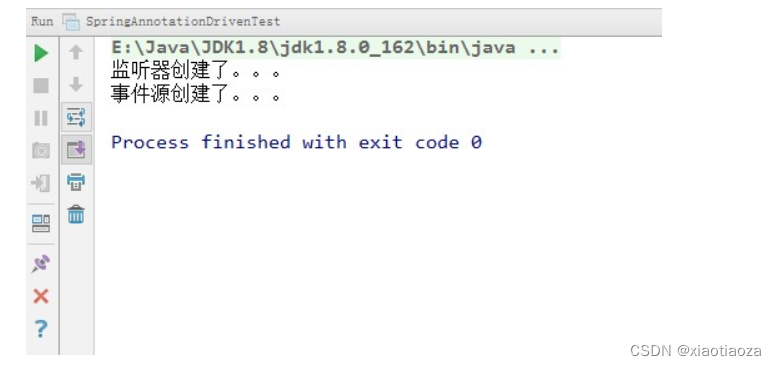
3.2 @Lazy
3.2.1 源码
@Target({ElementType.TYPE, ElementType.METHOD, ElementType.CONSTRUCTOR, ElementType.PARAMETER, ElementType.FIELD})
@Retention(RetentionPolicy.RUNTIME)
@Documented
public @interface Lazy {
boolean value() default true;
}
3.2.2 说明
-
作用:
用于指定单例bean对象的创建时机。在没有使用此注解时,单例bean的生命周期与容器相同。但使用此注解之后,单例对象的创建时机变成了第一次使用时创建。注意:这不是延迟加载思想(因为不是每次使用时都创建,只是第一次创建的时机改变了)。 -
属性:
value: 指定是否采用延迟加载。默认值为true,表示开启。 -
使用场景:
在实际开发中,当我们的Bean是单例对象时,并不是每个都需要一开始都加载到ioc容器之中,有些对象可以在真正使用的时候再加载,当有此需求时,即可使用此注解。值得注意的是,此注解只对单例bean对象起作用,当指定了@Scope注解的prototype取值后,此注解不起作用。
3.2.3 示例
/**
* @author hao
*/
@Component
@Lazy
//@Lazy(value = false)
//@Scope("prototype")
public class LazyBean {
public LazyBean(){
System.out.println("LazyBean对象创建了");
}
}
/**
* @author hao
*/
public class SpringAnnotationDrivenTest {
/**
* 测试
* @param args
*/
public static void main(String[] args) {
//1.获取容器
ApplicationContext ac = new AnnotationConfigApplicationContext("config");
//2.根据id获取对象
LazyBean lazyBean = (LazyBean)ac.getBean("lazyBean");
System.out.println(lazyBean);
}
}
3.3 @Conditional
3.3.1 源码
@Target({ElementType.TYPE, ElementType.METHOD})
@Retention(RetentionPolicy.RUNTIME)
@Documented
public @interface Conditional {
/**
* All {@link Condition Conditions} that must {@linkplain Condition#matches match}
* in order for the component to be registered.
*/
Class<? extends Condition>[] value();
}
3.3.2 说明
-
作用:
它的作用是
根据条件选择注入bean对象。 -
属性:
value: 用于提供一个Condition接口的实现类,实现类中需要编写具体代码实现注入的条件。 -
使用场景:
当我们在开发时,可能会使用多平台来测试,例如我们的测试数据库分别部署到了linux和windows两个操作系统上面,现在根据我们的工程运行环境选择连接的数据库。此时就可以使用此注解。同时基于此注解引出的
@Profile注解,就是根据不同的环境,加载不同的配置信息。
3.3.3 示例
/**
* 连接数据库的配置
* @author hao
*/
public class JdbcConfig {
@Value("${jdbc.driver}")
private String driver;
@Value("${jdbc.url}")
private String url;
@Value("${jdbc.username}")
private String username;
@Value("${jdbc.password}")
private String password;
/**
* linux系统注入的数据源
* @param lDriver
* @param lUrl
* @param lUsername
* @param lPassword
* @return
*/
@Bean("dataSource")
@Conditional(LinuxCondition.class)
public DataSource createLinuxDataSource(@Value("${linux.driver}") String lDriver,
@Value("${linux.url}")String lUrl,
@Value("${linux.username}")String lUsername,
@Value("${linux.password}")String lPassword){
DriverManagerDataSource dataSource = new DriverManagerDataSource(lUrl,lUsername,lPassword);
dataSource.setDriverClassName(lDriver);
System.out.println(lUrl);
return dataSource;
}
/**
* windows系统注入的数据源
* @return
*/
@Bean("dataSource")
@Conditional(WindowsCondition.class)
public DataSource createWindowsDataSource(){
DriverManagerDataSource dataSource = new DriverManagerDataSource();
dataSource.setDriverClassName(driver);
dataSource.setUrl(url);
dataSource.setUsername(username);
dataSource.setPassword(password);
System.out.println(url);
return dataSource;
}
}
/**
* @author hao
*/
public class LinuxCondition implements Condition {
@Override
public boolean matches(ConditionContext context, AnnotatedTypeMetadata metadata) {
//获取ioc使用的beanFactory
ConfigurableListableBeanFactory beanFactory = context.getBeanFactory();
//获取类加载器
ClassLoader classLoader = context.getClassLoader();
//获取当前环境信息
Environment environment = context.getEnvironment();
//获取bean定义的注册类
BeanDefinitionRegistry registry = context.getRegistry();
//获得当前系统名
String property = environment.getProperty("os.name");
//包含Windows则说明是windows系统,返回true
if (property.contains("Linux")){
return true;
}
return false;
}
}
/**
* @author hao
*/
public class WindowsCondition implements Condition {
@Override
public boolean matches(ConditionContext context, AnnotatedTypeMetadata metadata) {
//获取ioc使用的beanFactory
ConfigurableListableBeanFactory beanFactory = context.getBeanFactory();
//获取类加载器
ClassLoader classLoader = context.getClassLoader();
//获取当前环境信息
Environment environment = context.getEnvironment();
/**
* 获取所有系统环境变量
*/
if(environment instanceof StandardEnvironment){
StandardEnvironment standardEnvironment = (StandardEnvironment)environment;
Map<String,Object> map = standardEnvironment.getSystemProperties();
for(Map.Entry<String,Object> me : map.entrySet()){
System.out.println(me.getKey()+","+me.getValue());
}
}
//获取bean定义的注册类
BeanDefinitionRegistry registry = context.getRegistry();
//获得当前系统名
String property = environment.getProperty("os.name");
//包含Windows则说明是windows系统,返回true
if (property.contains("Windows")){
return true;
}
return false;
}
}
linux.driver=com.mysql.jdbc.Driver
linux.url=jdbc:mysql://localhost:3306/ssm
linux.username=root
linux.password=1234
-------------------------------------------------------------------------------------
jdbc.driver=com.mysql.jdbc.Driver
jdbc.url=jdbc:mysql://localhost:3306/spring_day01
jdbc.username=root
jdbc.password=1234
4. 用于创建对象的注解
4.1 @Component和三个衍生注解
4.1.1 源码
@Target(ElementType.TYPE)
@Retention(RetentionPolicy.RUNTIME)
@Documented
@Indexed
public @interface Component {
/**
* The value may indicate a suggestion for a logical component name,
* to be turned into a Spring bean in case of an autodetected component.
* @return the suggested component name, if any (or empty String otherwise)
*/
String value() default "";
}
@Target({ElementType.TYPE})
@Retention(RetentionPolicy.RUNTIME)
@Documented
@Component
public @interface Controller {
/**
* The value may indicate a suggestion for a logical component name,
* to be turned into a Spring bean in case of an autodetected component.
* @return the suggested component name, if any (or empty String otherwise)
*/
@AliasFor(annotation = Component.class)
String value() default "";
}
@Target({ElementType.TYPE})
@Retention(RetentionPolicy.RUNTIME)
@Documented
@Component
public @interface Service {
/**
* The value may indicate a suggestion for a logical component name,
* to be turned into a Spring bean in case of an autodetected component.
* @return the suggested component name, if any (or empty String otherwise)
*/
@AliasFor(annotation = Component.class)
String value() default "";
}
@Target({ElementType.TYPE})
@Retention(RetentionPolicy.RUNTIME)
@Documented
@Component
public @interface Repository {
/**
* The value may indicate a suggestion for a logical component name,
* to be turned into a Spring bean in case of an autodetected component.
* @return the suggested component name, if any (or empty String otherwise)
*/
@AliasFor(annotation = Component.class)
String value() default "";
}
4.1.2 说明
-
作用:
这四个注解都是用于修饰类的,为当前类创建一个对象存入Spring的IOC容器中。
在实例化时默认无参构造函数,同时支持带参构造函数,前提是构造函数的参数依赖必须要有值,否则抛异常。 -
属性:
value: 用于指定存入容器时bean的id。当不指定时,默认值为当前类的名称。 -
使用场景:
当我们需要把自己编写的类注入到IOC容器中,可以使用以上四个注解实现。以上四个注解中
@Component注解通常用在非三层对象中,而@Controller,@Service,@Repository三个注解一般是针对三层对象使用的,提供更加精确的语义化配置。需要注意的是,Spring在注解驱动开发时,要求必须先接管类对象,然后会处理类中的属性和方法。如果类没有被Spring接管,那么里面的属性和方法上的注解都不会被解析。
4.1.3 示例
- 正确的方式1:使用默认构造函数。
/**
* 用于记录系统日志
* @author hao
*/
@Component
public class LogUtil {
/**
* 默认无参构造函数
*/
public LogUtil(){
}
//可以使用aop思想实现系统日志的记录
}
- 正确的方式2:在构造函数中注入一个已经在容器中的bean对象。
/**
* 此处只是举例:使用JdbcTemplate作为持久层中的操作数据库对象
* @author hao
*/
@Repository("userDao")
public class UserDaoImpl implements UserDao{
private JdbcTemplate jdbcTemplate ;
/**
* 此时要求容器中必须有JdbcTemplate对象
* @param jdbcTemplate
*/
public UserDaoImpl(JdbcTemplate jdbcTemplate){
this.jdbcTemplate = jdbcTemplate;
}
}
- 正确的方式3:在构造函数中注入一个在配置文件获取到的值。
/**
* 用于记录系统日志
* @author hao
*/
@Component
public class LogUtil {
/**
* 构造时,注入日志级别
* @param logLevel
*/
public LogUtil(@Value("${log.level}")String logLevel){
System.out.println(logLevel);
}
//可以使用aop思想实现系统日志的记录
}
- 错误的方式:由于logLevel没有值,所以运行会报错。
/**
* 用于记录系统日志
* @author hao
*/
@Component
public class LogUtil {
/**
* 构造时,注入日志级别
* @param logLevel
*/
public LogUtil(String logLevel){
System.out.println(logLevel);
}
//可以使用aop思想实现系统日志的记录
}
5. 用于注入数据的注解
5.1 @Autowired
5.1.1 源码
@Target({ElementType.CONSTRUCTOR, ElementType.METHOD, ElementType.PARAMETER, ElementType.FIELD, ElementType.ANNOTATION_TYPE})
@Retention(RetentionPolicy.RUNTIME)
@Documented
public @interface Autowired {
/**
* Declares whether the annotated dependency is required.
* <p>Defaults to {@code true}.
*/
boolean required() default true;
}
5.1.2 说明
-
作用:
自动按照类型注入。当IOC容器中有且只有一个类型匹配时可以直接注入成功。当有超过一个匹配时,则使用变量名称(写在方法上就是方法名称)作为bean的id,在符合类型的bean中再次匹配,能匹配上就可以注入成功。当匹配不上时,是否报错要看required属性的取值。 -
属性:
required:是否必须注入成功。默认值是true,表示必须注入成功。当取值为true的时候,注入不成功会报错。 -
使用场景:
此注解的使用场景非常之多,在实际开发中应用广泛。通常情况下我们自己写的类中注入依赖bean对象时,都可以采用此注解。
5.1.3 示例
/**
* 此处只是举例:使用Jdbc作为持久层中的操作数据库对象
* @author hao
*/
@Repository("accountDao")
public class AccountDaoImpl implements AccountDao{
@Autowired
private JdbcTemplate jdbcTemplate ;
}
5.2 @Qualifier
5.2.1 源码
@Target({ElementType.FIELD, ElementType.METHOD, ElementType.PARAMETER, ElementType.TYPE, ElementType.ANNOTATION_TYPE})
@Retention(RetentionPolicy.RUNTIME)
@Inherited
@Documented
public @interface Qualifier {
String value() default "";
}
5.2.2 说明
-
作用:
当使用自动按类型注入时,遇到有多个类型匹配的时候,就可以使用此注解来明确注入哪个bean对象。注意它通常情况下都必须与@Autowired注解一起使用
-
属性:
value:用于指定bean的唯一标识。 -
使用场景:
在项目开发中,很多时候都会用到消息队列,以ActiveMQ为例。当和spring整合之后,Spring框架提供了一个JmsTemplate对象,它既可以用于发送点对点模型消息也可以发送主题模型消息。如果项目中两种消息模型都用上了,那么针对不同的代码,将会注入不同的JmsTemplate,而容器中出现两个之后,就可以使用此注解注入。当然不用也可以,我们只需要把要注入的变量名称改为和要注入的bean的id一致即可。
5.3 @Resource
5.3.1 源码
@Target({TYPE, FIELD, METHOD})
@Retention(RUNTIME)
public @interface Resource {
String name() default "";
String lookup() default "";
Class<?> type() default java.lang.Object.class;
enum AuthenticationType {
CONTAINER,
APPLICATION
}
AuthenticationType authenticationType() default AuthenticationType.CONTAINER;
boolean shareable() default true;
String mappedName() default "";
String description() default "";
}
5.3.2 说明
-
作用:
作用是找到依赖组件注入到应用来,它利用了JNDI(Java Naming and Directory Interface Java命名目录接口 J2EE规范之一)技术查找所需的资源。如果所有属性都不指定,它默认按照byType的方式装配bean对象。如果指定了name,没有指定type,则采用byName。如果没有指定name,而是指定了type,则按照byType装配bean对象。当byName和byType都指定了,两个都会校验,有任何一个不符合条件就会报错。
-
属性:
name:资源的JNDI名称。在spring的注入时,指定bean的唯一标识。
type:指定bean的类型。
lookup: 引用指向的资源名称。它可以使用全局JNDI名称链接到任何兼容的资源。
authenticationType: 指定资源的身份验证类型。它只能为任何受支持类型的连接工厂的资源指定此选项,而不能为其他类型的资源指定此选项。
shareable:指定此资源是否可以在此组件和其他组件之间共享。
mappedName:指定资源的映射名称。
description:指定资源的描述。 -
使用场景:
当我们某个类的依赖bean在ioc容器中存在多个的时候,可以使用此注解指定特定的bean对象注入。当然我们也可以使用@Autowired配合@Qualifier注入。
5.4 @Value
5.4.1 源码
@Target({ElementType.FIELD, ElementType.METHOD, ElementType.PARAMETER, ElementType.ANNOTATION_TYPE})
@Retention(RetentionPolicy.RUNTIME)
@Documented
public @interface Value {
/**
* The actual value expression: for example {@code #{systemProperties.myProp}}.
*/
String value();
}
5.4.2 说明
-
作用:
用于注入基本类型和String类型的数据。它支持spring的EL表达式,可以通过${}的方式获取配置文件中的数据。配置文件支持properties,xml和yml文件。 -
属性:
value: 指定注入的数据或者spring的el表达式。 -
使用场景:
在实际开发中,像连接数据库的配置,发送邮件的配置等等,都可以使用配置文件配置起来。此时读取配置文件就可以借助spring的el表达式读取。
5.4.3 示例
jdbc.driver=com.mysql.jdbc.Driver
jdbc.url=jdbc:mysql://localhost:3306/spring_day01
jdbc.username=root
jdbc.password=1234
/**
* 连接数据库的配置
* @author hao
*/
public class JdbcConfig {
@Value("${jdbc.driver}")
private String driver;
@Value("${jdbc.url}")
private String url;
@Value("${jdbc.username}")
private String username;
@Value("${jdbc.password}")
private String password;
/**
* windows系统注入的数据源
* @return
*/
@Bean("dataSource")
public DataSource createWindowsDataSource(){
DriverManagerDataSource dataSource = new DriverManagerDataSource();
dataSource.setDriverClassName(driver);
dataSource.setUrl(url);
dataSource.setUsername(username);
dataSource.setPassword(password);
return dataSource;
}
}
5.5 @Inject
5.5.1 源码
@Target({ METHOD, CONSTRUCTOR, FIELD })
@Retention(RUNTIME)
@Documented
public @interface Inject {
}
5.5.2 说明
-
作用:
用于建立依赖关系,和@Resource和@Autowired的作用是一样的。
在使用之前需要先导入坐标:
<!-- https://mvnrepository.com/artifact/javax.inject/javax.inject -->
<dependency>
<groupId>javax.inject</groupId>
<artifactId>javax.inject</artifactId>
<version>1</version>
</dependency>
但是他们之前也有区别:
@Autowired:来源于spring框架自身。默认是byType自动装配,当配合了@Qualifier注解之后,由@Qualifier实现byName装配。它有一个required属性,用于指定是否必须注入成功。
@Resource:来源于JSR-250规范。在没有指定name属性时是byType自动装配,当指定了name属性之后,采用byName方式自动装配。
@Inject:来源于JSR-330规范。它不支持任何属性,但是可以配合@Qualifier或者@Primary注解使用。同时,它默认是采用byType装配,当指定了JSR-330规范中的@Named注解之后,变成byName装配。
-
属性:无
-
使用场景:
在使用@Autowired注解的地方,都可以替换成@Inject。它也可以出现在方法上,构造函数上和字段上,但是需要注意的是:因为JRE无法决定构造方法注入的优先级,所以规范中规定类中只能有一个构造方法带@Inject注解。
5.5.3 示例
/**
* 第一种写法: 写在字段上
* 此处只是举例:使用Jdbc作为持久层中的操作数据库对象
* @author hao
*/
@Repository("userDao")
public class UserDaoImpl implements UserDao{
@Inject
private JdbcTemplate jdbcTemplate ;
}
/**
* 第二种写法:写在构造函数上
* 此处只是举例:使用Jdbc作为持久层中的操作数据库对象
* @author hao
*/
@Repository("accountDao")
public class AccountDaoImpl implements AccountDao{
private JdbcTemplate jdbcTemplate ;
/**
* 此时要求容器中必须有JdbcTemplate对象
* @param jdbcTemplate
*/
@Inject
public AccountDaoImpl(JdbcTemplate jdbcTemplate){
this.jdbcTemplate = jdbcTemplate;
}
}
/**
* 第三种写法:配合@Named注解使用
* 此处只是举例:使用Jdbc作为持久层中的操作数据库对象
* @author hao
*/
@Repository("accountDao")
public class AccountDaoImpl implements AccountDao{
@Inject
@Named("jdbcTemplate")
private JdbcTemplate jdbcTemplate ;
}
5.6 @Primary
5.6.1 源码
@Target({ElementType.TYPE, ElementType.METHOD})
@Retention(RetentionPolicy.RUNTIME)
@Documented
public @interface Primary {
}
5.6.2 说明
-
作用:
用于指定bean的注入优先级,被@Primary修饰的bean对象优先注入。 -
属性:无
-
使用场景:
当依赖对象存在多个时,@Autowired注解已经无法完成功能,此时我们首先想到的是@Qualifier注解指定依赖bean的id。但是此时就产生了,无论有多少个bean,每次都会使用指定的bean注入。但是当我们使用@Primary,表示优先使用被@Primary注解的bean,但是当不存在时还会使用其他的。
5.6.3 示例
/**
* @author hao
*/
@Service("accountService")
public class AccountServiceImpl implements AccountService {
@Autowired
// @Qualifier("accountImpl1")
private AccountDao accountDao;
public void save(){
System.out.println(accountDao);
}
}
/**
* 此处只是举例:使用Jdbc作为持久层中的操作数据库对象
* @author hao
*/
@Repository("accountDaoImpl1")
public class AccountDaoImpl implements AccountDao{
@Override
public String toString() {
return "accountDaoImpl1";
}
}
/**
* 此处只是举例:使用Jdbc作为持久层中的操作数据库对象
* @author hao
*/
@Repository("accountDaoImpl2")
@Primary
public class AccountDaoImpl2 implements AccountDao{
@Override
public String toString() {
return "accountDaoImpl2";
}
}
6. 和生命周期以及作用范围相关的注解
6.1 @Scope
6.1.1 源码
@Target({ElementType.TYPE, ElementType.METHOD})
@Retention(RetentionPolicy.RUNTIME)
@Documented
public @interface Scope {
/**
* Alias for {@link #scopeName}.
* @see #scopeName
*/
@AliasFor("scopeName")
String value() default "";
/**
* Specifies the name of the scope to use for the annotated component/bean.
* <p>Defaults to an empty string ({@code ""}) which implies
* {@link ConfigurableBeanFactory#SCOPE_SINGLETON SCOPE_SINGLETON}.
* @since 4.2
* @see ConfigurableBeanFactory#SCOPE_PROTOTYPE
* @see ConfigurableBeanFactory#SCOPE_SINGLETON
* @see org.springframework.web.context.WebApplicationContext#SCOPE_REQUEST
* @see org.springframework.web.context.WebApplicationContext#SCOPE_SESSION
* @see #value
*/
@AliasFor("value")
String scopeName() default "";
/**
* Specifies whether a component should be configured as a scoped proxy
* and if so, whether the proxy should be interface-based or subclass-based.
* <p>Defaults to {@link ScopedProxyMode#DEFAULT}, which typically indicates
* that no scoped proxy should be created unless a different default
* has been configured at the component-scan instruction level.
* <p>Analogous to {@code <aop:scoped-proxy/>} support in Spring XML.
* @see ScopedProxyMode
*/
ScopedProxyMode proxyMode() default ScopedProxyMode.DEFAULT;
}
6.1.2 说明
-
作用:
用于指定bean对象的作用范围。 -
属性:
value: 指定作用范围的取值。在注解中默认值是""。但是在spring初始化容器时,会借助ConfigurableBeanFactory接口中的类成员:String SCOPE_SINGLETON = "singleton";
scopeName: 和value的作用是一样的。
proxyMode: 指定bean对象的代理方式。指定ScopedProxyMode枚举的值 :
DEFAULT:默认值。(就是NO)
NO:不使用代理。
INTERFACES:使用JDK官方的基于接口的代理。
TARGET_CLASS:使用CGLIB基于目标类的子类创建代理对象。 -
使用场景:
在实际开发中,我们的bean对象默认都是单例的。通常情况下,被spring管理的bean都使用单例模式来创建。但是也有例外,例如Struts2框架中的Action,由于有模型驱动和OGNL表达式的原因,就必须配置成多例的。
6.2 @PostConstruct
6.2.1 源码
@Documented
@Retention (RUNTIME)
@Target(METHOD)
public @interface PostConstruct {
}
6.2.2 说明
-
作用:
用于指定bean对象的初始化方法。 -
属性:无
-
使用场景:在bean对象创建完成后,需要对bean中的成员进行一些初始化的操作时,就可以使用此注解配置一个初始化方法,完成一些初始化的操作。
6.3 @PreDestroy
6.3.1 源码
@Documented
@Retention (RUNTIME)
@Target(METHOD)
public @interface PreDestroy {
}
6.3.2 说明
-
作用:
用于指定bean对象的销毁方法。 -
属性:无
-
使用场景:在bean对象销毁之前,可以进行一些清理操作。
7. @Import注解的使用
7.1 ImportSelector和ImportBeanDefinitionRegistrar介绍
我们在注入bean对象时,可选的方式有很多种。例如:
-
我们自己写的类,可以使用@Component,@Service,@Repository,@Controller等等。
-
我们导入第三方库中的类时可以使用@Bean(当需要做一些初始化操作时,比如DataSource),也可以使用@Import注解,直接指定要引入的类的字节码。
但当我们的类很多时,在每个类上加注解会很繁琐,同时使用@Bean或者@Import写起来也很麻烦。此时我们就可以采用自定义ImportSelector或者ImportBeanDefinitionRegistrar来实现。
共同点:他们都是用于动态注册bean对象到容器中的。并且支持大批量的bean导入。
区别:
-
ImportSelector是一个接口,我们在使用时需要自己提供实现类。实现类中返回要注册的bean的全限定类名数组,然后执行ConfigurationClassParser类中的processImports方法注册bean对象。
-
ImportBeanDefinitionRegistrar也是一个接口,需要我们自己编写实现类,在实现类中手动注册bean到容器中。
实现ImportSelector接口或者ImportBeanDefinitionRegistrar接口的类不会被解析成一个Bean注册到容器中。同时,在注册到容器中时bean的唯一标识是全限定类名,而非短类名。
7.2 自定义ImportSelector
/**
* @author hao
*/
public interface UserService {
void saveUser();
}
/**
* @author hao
*/
public class UserServiceImpl implements UserService {
@Override
public void saveUser() {
System.out.println("保存用户");
}
}
/**
* @author hao
*/
@Configuration
@ComponentScan("com.test")
@Import(CustomeImportSelector.class)
public class SpringConfiguration {
}
/**
* customeimport.properties配置文件中的内容:
* custome.importselector.expression= com.test.service.impl.*
* @author hao
*/
public class CustomeImportSelector implements ImportSelector {
private String expression;
public CustomeImportSelector(){
try {
Properties loadAllProperties = PropertiesLoaderUtils.loadAllProperties("customeimport.properties");
expression = loadAllProperties.getProperty("custome.importselector.expression");
} catch (IOException e) {
// TODO Auto-generated catch block
e.printStackTrace();
}
}
/**
* 生成要导入的bean全限定类名数组
* @param importingClassMetadata
* @return
*/
@Override
public String[] selectImports(AnnotationMetadata importingClassMetadata) {
//1.定义扫描包的名称
String[] basePackages = null;
//2.判断有@Import注解的类上是否有@ComponentScan注解
if (importingClassMetadata.hasAnnotation(ComponentScan.class.getName())) {
//3.取出@ComponentScan注解的属性
Map<String, Object> annotationAttributes = importingClassMetadata.getAnnotationAttributes(ComponentScan.class.getName());
//4.取出属性名称为basePackages属性的值
basePackages = (String[]) annotationAttributes.get("basePackages");
}
//5.判断是否有此属性(如果没有ComponentScan注解则属性值为null,如果有ComponentScan注解,则basePackages默认为空数组)
if (basePackages == null || basePackages.length == 0) {
String basePackage = null;
try {
//6.取出包含@Import注解类的包名
basePackage = Class.forName(importingClassMetadata.getClassName()).getPackage().getName();
} catch (ClassNotFoundException e) {
e.printStackTrace();
}
//7.存入数组中
basePackages = new String[] {basePackage};
}
//8.创建类路径扫描器
ClassPathScanningCandidateComponentProvider scanner = new ClassPathScanningCandidateComponentProvider(false);
//9.创建类型过滤器(此处使用切入点表达式类型过滤器)
TypeFilter typeFilter = new AspectJTypeFilter(expression,this.getClass().getClassLoader());
//10.给扫描器加入类型过滤器
scanner.addIncludeFilter(typeFilter);
//11.创建存放全限定类名的集合
Set<String> classes = new HashSet<>();
//12.填充集合数据
for (String basePackage : basePackages) {
scanner.findCandidateComponents(basePackage).forEach(beanDefinition -> classes.add(beanDefinition.getBeanClassName()));
}
//13.按照规则返回
return classes.toArray(new String[classes.size()]);
}
}
/**
* 测试类
* @author hao
*/
public class SpringCustomeImportSelectorTest {
public static void main(String[] args) {
AnnotationConfigApplicationContext ac = new AnnotationConfigApplicationContext("config");
String[] names = ac.getBeanDefinitionNames();
for(String beanName : names){
Object obj = ac.getBean(beanName);
System.out.println(beanName+"============"+obj);
}
}
}
7.3 自定义ImportBeanDefinitionRegistrar
借助7.2小节的案例代码,只需要把配置改一下:
/**
* @author hao
*/
@Configuration
@ComponentScan("com.test")
@Import(CustomeImportDefinitionRegistrar.class)
public class SpringConfiguration {
}
/**
* 自定义bean导入注册器
* @author hao
*/
public class CustomeImportDefinitionRegistrar implements ImportBeanDefinitionRegistrar {
private String expression;
public CustomeImportDefinitionRegistrar(){
try {
Properties loadAllProperties = PropertiesLoaderUtils.loadAllProperties("customeimport.properties");
expression = loadAllProperties.getProperty("custome.importselector.expression");
} catch (IOException e) {
// TODO Auto-generated catch block
e.printStackTrace();
}
}
@Override
public void registerBeanDefinitions(AnnotationMetadata importingClassMetadata, BeanDefinitionRegistry registry) {
//1.定义扫描包的名称
String[] basePackages = null;
//2.判断有@Import注解的类上是否有@ComponentScan注解
if (importingClassMetadata.hasAnnotation(ComponentScan.class.getName())) {
//3.取出@ComponentScan注解的属性
Map<String, Object> annotationAttributes = importingClassMetadata.getAnnotationAttributes(ComponentScan.class.getName());
//4.取出属性名称为basePackages属性的值
basePackages = (String[]) annotationAttributes.get("basePackages");
}
//5.判断是否有此属性(如果没有ComponentScan注解则属性值为null,如果有ComponentScan注解,则basePackages默认为空数组)
if (basePackages == null || basePackages.length == 0) {
String basePackage = null;
try {
//6.取出包含@Import注解类的包名
basePackage = Class.forName(importingClassMetadata.getClassName()).getPackage().getName();
} catch (ClassNotFoundException e) {
e.printStackTrace();
}
//7.存入数组中
basePackages = new String[] {basePackage};
}
//8.创建类路径扫描器
ClassPathBeanDefinitionScanner scanner = new ClassPathBeanDefinitionScanner(registry, false);
//9.创建类型过滤器(此处使用切入点表达式类型过滤器)
TypeFilter typeFilter = new AspectJTypeFilter(expression,this.getClass().getClassLoader());
//10.给扫描器加入类型过滤器
scanner.addIncludeFilter(typeFilter);
//11.扫描指定包
scanner.scan(basePackages);
}
}
8. @Profile注解的使用
8.1 使用场景分析
@Profile注解是spring提供的一个用来标明当前运行环境的注解。我们正常开发过程中经常遇到的问题是,开发环境是一套环境,测试是一套环境,线上部署又是一套环境。这样从开发到测试再到部署,会对程序中的配置修改多次,尤其是从测试到上线这个环节,测试人员也不敢保证改了哪个配置之后还能不能在线上运行。为了解决上面的问题,我们一般会使用一种方法,就是针对不同的环境进行不同的配置,从而在不同的场景中跑我们的程序。而spring中的@Profile注解的作用就体现在这里。在spring使用DI来注入的时候,能够根据当前制定的运行环境来注入相应的bean。最常见的就是使用不同的DataSource了。
8.2 代码实现
- 自定义不同环境的数据源
package config;
import com.alibaba.druid.pool.DruidDataSource;
import org.springframework.beans.factory.annotation.Value;
import org.springframework.context.annotation.Bean;
import org.springframework.context.annotation.Profile;
/**
* @author hao
*/
public class JdbcConfig {
@Value("${jdbc.driver}")
private String driver;
@Value("${jdbc.url}")
private String url;
@Value("${jdbc.username}")
private String username;
@Value("${jdbc.password}")
private String password;
/**
* @return
*/
@Bean("dataSource")
@Profile("dev")
public DruidDataSource createDevDataSource(){
DruidDataSource dataSource = new DruidDataSource();
dataSource.setDriverClassName(driver);
dataSource.setUrl(url);
dataSource.setUsername(username);
dataSource.setPassword(password);
dataSource.setMaxActive(10);
return dataSource;
}
/**
* @return
*/
@Bean("dataSource")
@Profile("test")
public DruidDataSource createTestDataSource(){
DruidDataSource dataSource = new DruidDataSource();
dataSource.setDriverClassName(driver);
dataSource.setUrl(url);
dataSource.setUsername(username);
dataSource.setPassword(password);
dataSource.setMaxActive(50);
return dataSource;
}
/**
* @return
*/
@Bean("dataSource")
@Profile("produce")
public DruidDataSource createProduceDataSource(){
DruidDataSource dataSource = new DruidDataSource();
dataSource.setDriverClassName(driver);
dataSource.setUrl(url);
dataSource.setUsername(username);
dataSource.setPassword(password);
dataSource.setMaxActive(100);
return dataSource;
}
}
- 编写配置类
/**
* @author hao
*/
@Configuration
@Import(JdbcConfig.class)
public class SpringConfiguration {
}
- 编写测试类
/**
* @author hao
*/
@RunWith(SpringJUnit4ClassRunner.class)
@ContextConfiguration(classes = SpringConfiguration.class)
@ActiveProfiles("test")
public class SpringProfileTest {
@Autowired
private DruidDataSource druidDataSource;
@Test
public void testProfile(){
System.out.println(druidDataSource.getMaxActive());
}
}
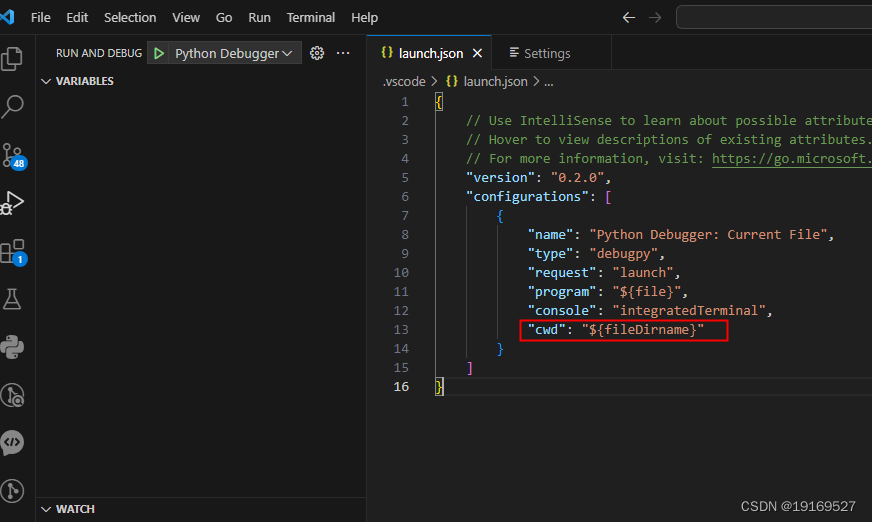

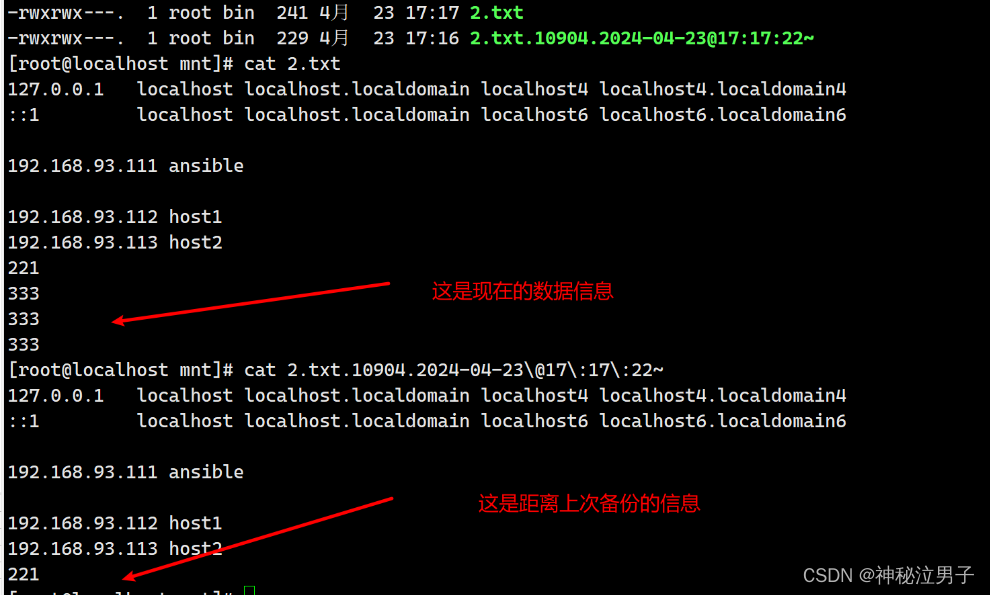
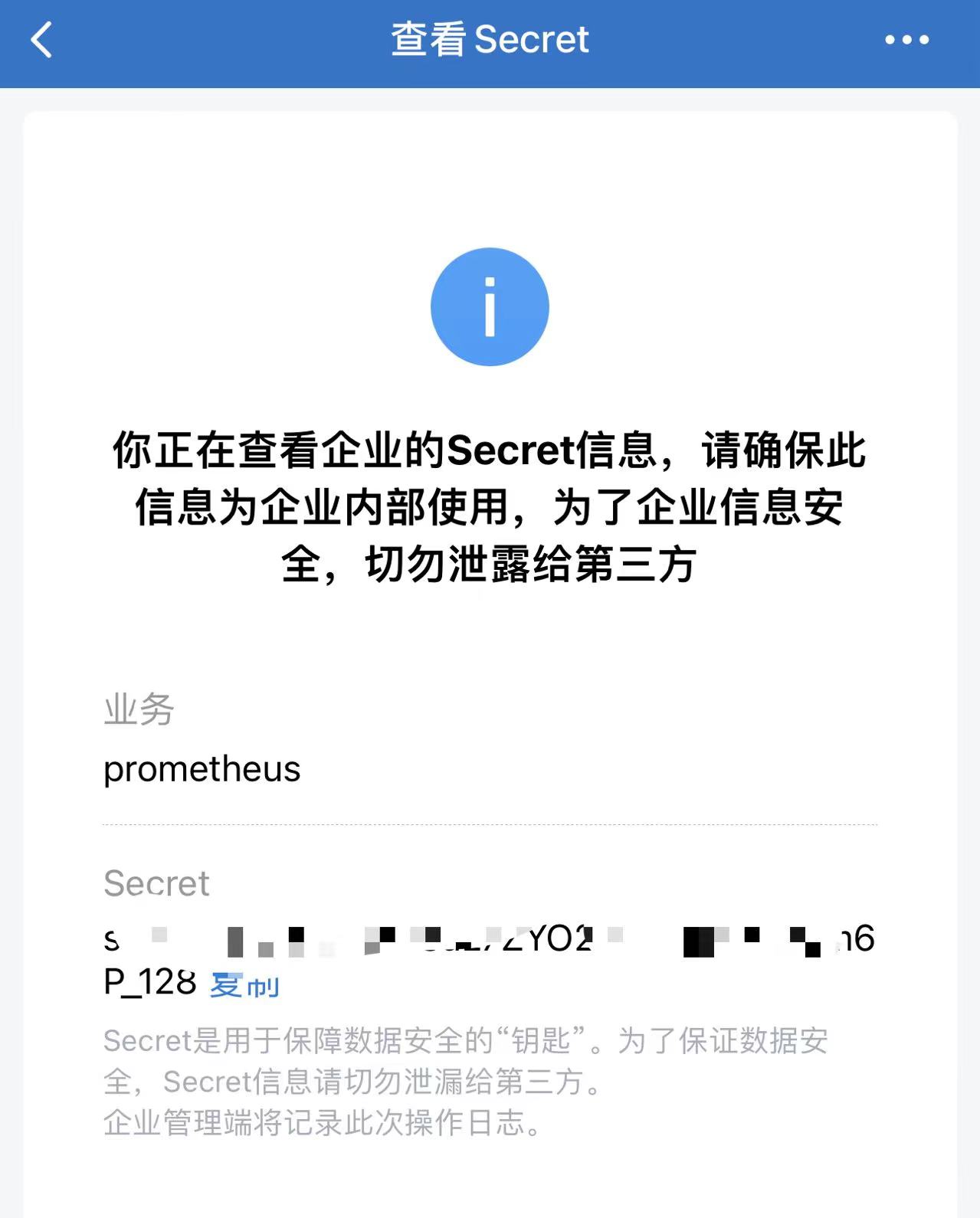







![[Swift]单元测试](https://img-blog.csdnimg.cn/direct/e652771ba1434342a5d00119419ea774.png)

